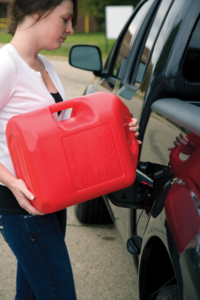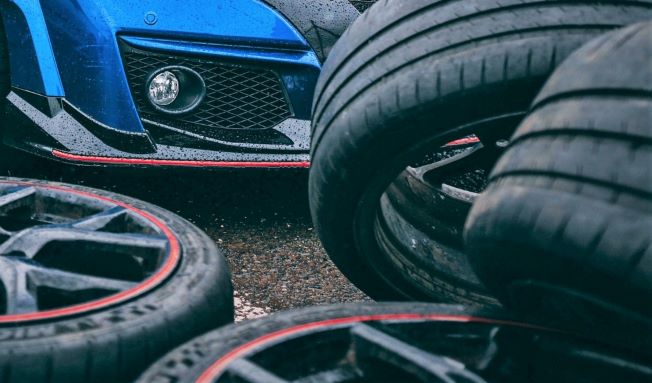A road trip is essentially one of the most beautiful and fulfilling experiences that we can relish in our mundane life. But before you embark on this uplifting journey, you should take a good look at your car’s state to make sure you can avoid any breakdown on the trip. A flat tire on an ordinary day is fine, but you don’t want to be stranded in the middle of nowhere. Better be safe than sorry. Therefore, we have listed down the essential vehicle checks before you begin the fun-filled adventure.
- Toil and trouble of tires!
The worst thing that can quickly dampen your mood on a road trip is to experience the toil and trouble of a flat tire. One must ensure that the tires are in perfect condition and the air pressure is optimal for a safe journey. Please ensure that the tire tread is above the legal tread limit of 1.6mm across the middle 3/4 of the tire and all the way around. The type pressure must also be checked and maintained according to the weight carried by the vehicle. You can try and invest in a sound tire pressure management system with proper sensors to enable appropriate indications. Lastly, and most importantly, a right spare tire.
The type pressure must also be checked and maintained according to the weight carried by the vehicle. You can try and invest in a sound tire pressure management system with proper sensors to enable appropriate indications. Lastly, and most importantly, a right spare tire.
- In times of emergency!
An emergency kit is a must-have at all times and not just for road trips. A well-stocked first-aid kit is required to deal with any bump, bruise, cut, or other self-treatable injuries while traveling. You don’t have to elaborate on the medical items, but we recommend you pack basic things like bandages, ointments, gauze, gloves, and ice packs. Moreover, you must include basic medicines like ibuprofen and prescription drugs. Apart from these, you must also incorporate the car emergency items like screwdrivers, wrenches, and flashlights.
- Fuel and Oil Check
 Before you begin your fun road trip, ensure that the gas tank is filled up. In this way, you would be saving up money by opting for lower prices than the fuel cost at the motorway services.
Before you begin your fun road trip, ensure that the gas tank is filled up. In this way, you would be saving up money by opting for lower prices than the fuel cost at the motorway services.The oil check of the car is equally important. Sometimes, it is better to use a heavier oil for an older car to balance out the internal engine wear during a long road trip. You can opt for filter change as well. For new vehicles, however, the oil check won’t be much of an issue. I always carry fuel in my favorite 5-gallon MidWest Fuel container.
- Steer clear of the way!
Steering check is one of the vital steps before starting the journey. The steering assembly should be fully functioning because the car might be low on steering fluid at times. To enjoy a hassle-free road trip, check the steering fluid carefully and change the power steering fluid about every 50,000 miles to be on the safe side.
- Electrical Check
An electrical check is one of the essential checks before a road trip. Every switch must be examined thoroughly, as well as the gears.
- Lights and Leaks
It is well-understandable that long road trips would ensure driving during the night or in the misty conditions (depending upon the region). Therefore, you must check all the lights are fully functioning before getting behind the wheel. The lights must include indicators, headlights, and brake lights. Also, have your vehicle inspected by a professional for any leaks.
- Look clearer!
Before you begin the road trip, a quick check of your windows and mirrors are pertinent. Check for dents, scratches, or dirt layers in your vehicle’s mirrors or windows to avoid any visual obstruction. It would be challenging to deal with such nagging issues on the road and with no way out. Therefore, it is better to do the needful to have a clearer view of the road ahead of you.
- Vehicle Papers
The three most important documents you must carry on a road trip are – the driving license, your insurance papers, and the MOT certificate. An MOT certificate confirms that your car met the minimum road safety and environmental standards stipulated by the country’s law at the time of the test.
- Fluids
The car’s fluid levels must all be topped off to avoid unnecessary and unfortunate breakdowns that could also lead to various accidents. Therefore, lift the bonnet and locate the engine coolant in the reservoir. The mark should be closest to the maximum mark to prevent engine damage from overheating or freezing in different temperatures.
- Brake Fluid
The car’s brake fluid is also located in the reservoir, depending on the type of car you are driving. The brake booster is usually found on the driver’s side, near the right firewall, and connected to the brake master cylinder. The ‘dot’ specification is to be followed for precision. Make sure that it is not extremely low. Otherwise, the car is not safe to drive. If you are not well-conversant, refer to the owner’s manual that comes with the vehicle with a better understanding.
What is your list before a road trip ? Share with us in the comment section below.

 The type pressure must also be checked and maintained according to the weight carried by the vehicle. You can try and invest in a sound tire pressure management system with proper sensors to enable appropriate indications. Lastly, and most importantly, a right spare tire.
The type pressure must also be checked and maintained according to the weight carried by the vehicle. You can try and invest in a sound tire pressure management system with proper sensors to enable appropriate indications. Lastly, and most importantly, a right spare tire.